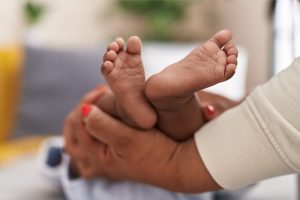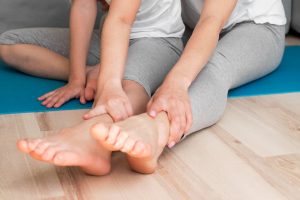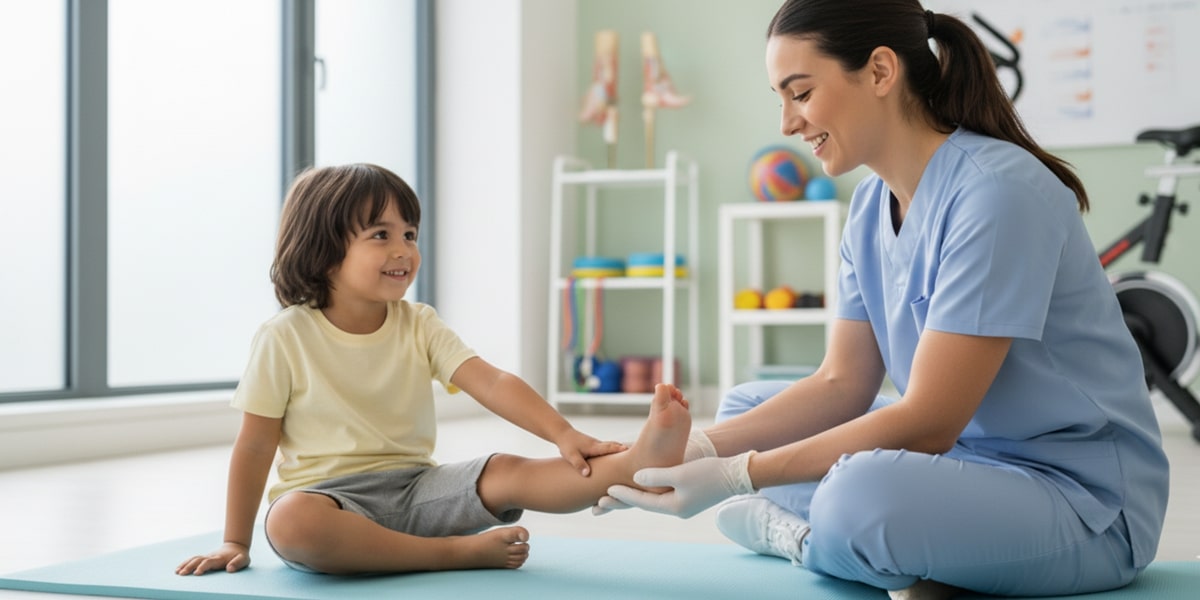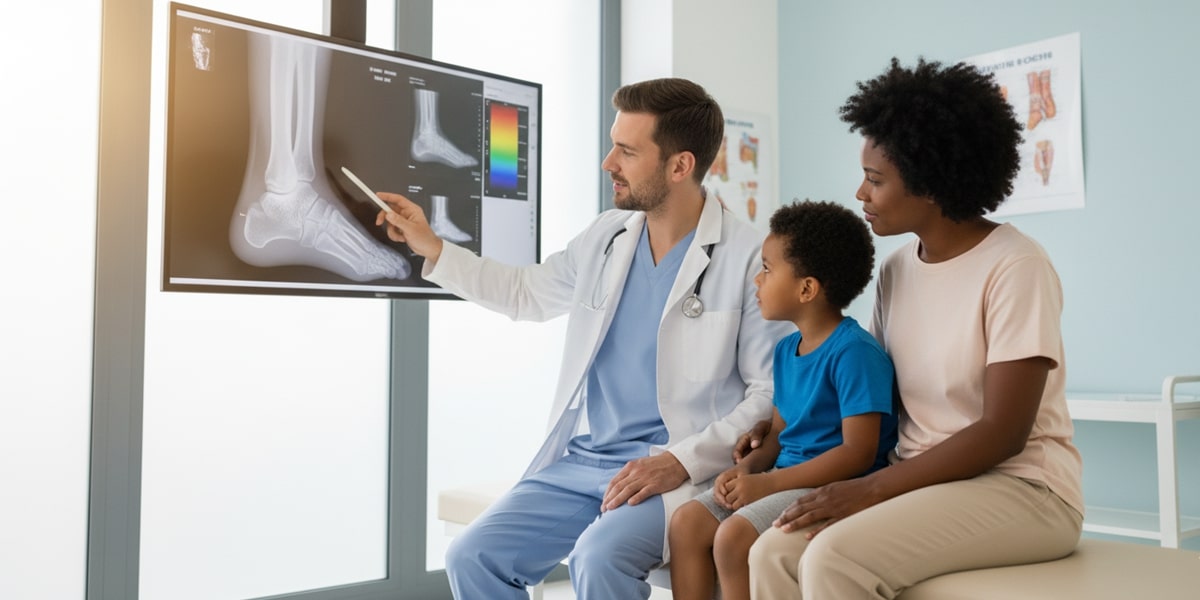Every parent wants to keep their child’s feet healthy. At Foot + Ankle Specialty Centers in Mesa, our infant podiatrists focus only on children’s foot issues. We use the best treatments to get results you can trust. To learn more about how children’s feet should grow and how to care for theirs, call or book online. Stop Googling “pediatric foot doctor near me in Mesa” and read this guide instead.
What Does a Pediatric Podiatrist Do?
A pediatric foot doctor sees kids of all ages and treats their foot and ankle problems. These can be small issues like ingrown toenails or flat feet, or bigger ones like congenital deformities or walking problems.
In Mesa, these specialists make sure the foot develops well. They offer both non‑surgical and surgical treatments based on what each child needs.
Why Choose Our Pediatric Podiatrists Mesa?
Children don’t always say when something hurts, especially in their feet. If you see limping, frequent trips, or avoiding running or playing, it’s time for a specialist. Our Mesa pediatric podiatrists are trusted because we:
- Treat children from babies to teens
- Use gentle care suited for growing feet
- Explain everything in words kids understand
- Have a clinic based in Mesa
- Give personalized care plans
Causes of Pediatric Foot Pain and Problems
Here are common reasons children need foot care:
- Inherited traits like flat feet or high arches.
- Shoes that don’t fit well, causing pressure, bunions, ingrown toenails.
- Injuries from accidents, cuts, sprains, or fractures.
- Overuse from sports or physical activities.
- Extra weight putting more stress on growing bones.
- Poor alignment while standing or walking.
- Fungal, viral, or bacterial infections (such as athlete’s foot or warts).
- Rapid growth, which can lead to conditions like Sever’s disease.
What are the Most Common Childhood Deformities of the Foot?
Condition | Description |
Low arch / No visible arch | May or may not cause discomfort; common in young children. |
Clubfoot | Foot is twisted at birth; needs early medical treatment. |
Metatarsus Adductus | The front of the foot curves inward; it may improve on its own or need treatment. |
Intoeing (“Pigeon‑toed”) | Feet turn inward while walking; often gets better as the child grows. |
Tarsal Coalition | Some foot bones are fused, which causes pain and limits movement. |
Pediatric Foot Care Treatments in Mesa, AZ
At Foot + Ankle Specialty Centers in Mesa, we offer treatments made for children. Our goal is to use the least invasive methods first. Some of our treatments:
- Custom orthotics to support foot structure, help with flat feet or intoeing
- Physical therapy to strengthen foot and ankle, improve flexibility, help walking
- Guidance on choosing good shoes to avoid issues like ingrown nails or pressure points
- Minimally invasive surgery if needed, when more conservative treatments don’t help
- Treatments for skin and nail problems like warts, athlete’s foot, Sever’s disease
- Teaching about foot care, preventing injury, and good footwear
How Long Does It Take to Treat Pediatric Foot Problems?
- Ingrown toenails usually heal in one visit or a few weeks.
- Warts take several weeks to a few months to go away.
- Athlete’s foot clears up in 1 to 2 weeks.
- Flat feet may take months or years to treat.
- Clubfoot needs care from birth to around age 4 or 5.
- Metatarsus adductus often improves in a few months.
- Intoeing may improve over time but needs monitoring.
- Sever’s disease lasts a few weeks to a few months.
- Tarsal coalition may need months of care or surgery.
- Sprains or strains heal in weeks to several months.
Pediatric Podiatry Specialist Near Me in Mesa, Arizona
If you want excellent care, come to Foot + Ankle Specialty Centers in Mesa. We focus on children’s foot and ankle health. Your child’s feet deserve the best care. Let our specialists help them walk, run, and play with confidence.
FAQs About Pediatric Podiatry
How big is my toddler's foot?
It varies, but most toddlers wear size 4–7 (U.S. size) between ages 1–3.
When should I take my child to a foot doctor?
If you notice pain, limping, walking issues, or odd foot shapes.
How often should I check my child's shoe size in Mesa?
Every 2–3 months, as kids’ feet grow quickly.
What signs suggest my child has a foot problem?
Limping, frequent tripping, toe-walking, pain, or uneven shoe wear.
Is it normal for kids to walk on their toes?
Sometimes, yes—but if it continues past age 2, see a doctor.
When should I see a podiatrist?
At the first sign of foot pain, deformity, or walking problems.
How can I prevent foot problems in my child?
Buy proper shoes, check foot growth often, and watch how they walk.
Are flat feet in children a serious issue?
Usually not, but if there’s pain or trouble walking, get it checked.
Related Blogs

Pediatric Flatfoot Deformity and Its Treatment
Pediatric flatfoot is a common problem in kids. It means the arches in their feet don’t form the way they should. Sometimes, flat feet don’t hurt

What Are Clubfoot Baby Foot Problems?
Hearing that your baby has clubfoot is overwhelming. You may have many questions and worries about what this means for your child’s future. The good news

Pediatric Sports Injury Treatment and Signs in Arizona
Athletic children are always at risk of foot and ankle injuries. Running, jumping, and fast and sudden movements can easily injure them. So, children and parents


